Most datasheets give a parameter called "loss tangent" instead of directly giving the ESR value. Why don't they just give a numeric value for it? Why is loss tangent preferred over ESR? Is there something that prevents giving the ESR, like it is being dependent on frequency?
-
As a lot of these things, my guess would be that it's largely due to historical reasons. – Jarrod Christman Jan 26 '15 at 13:05
-
1ESR is frequency dependent. Refer to this [article](http://www.atceramics.com/Userfiles/esrlosses_appnote.pdf). – nidhin Jan 26 '15 at 14:00
3 Answers
It's just one of many ways to specify the same thing.
Other ways include:
- dissipation factor (DF)
- quality factor (Q)
$$ \tan \delta = \text{DF} = {1\over Q} = {\text{ESR} \over X_C} $$
It's simply a matter of which is more convenient for the task at hand. The choice of which measure is used might be influenced by the expected application of the capacitor, or just tradition.
Notice in particular that the term including ESR also includes the capacitor's reactance, which is frequency dependent. Thus, to calculate the ESR from the loss tangent, quality factor, or dissipation factor, we must also know the capacitance and the frequency at which these other measures are specified.
Furthermore, although the ESR model would suggest a resistive loss independent of frequency, in reality the ESR also varies with frequency. Thus, it is unwise to extrapolate any qualities given in the datasheet to substantially different frequencies.
- 56,804
- 17
- 141
- 262
Some capacitors, especially those with axial leads, behave much like a single ideal capacitor in series with a single ideal resistor, but many other capacitors don't; they behave more like a complex network of many small ideal capacitors interconnected via ideal resistors and inductors. When driven with a sine wave of any particular frequency, even a real capacitor will generally behave like a single ideal cap in series with a single ideal resistor, but the values of apparent cap and resistor at 1Hz may be very different from their values at 100MHz. Consider the following network:

simulate this circuit – Schematic created using CircuitLab
R1 and C1 form the equivalent of a 10uF capacitor with a "perfect" ESR of 10 ohms; R2 and C2 are equivalent to a 100uF capacitor, also with a "perfect" ESR of 10 ohms. The remaining parts form a simplified version of a more "typical" 100uF capacitor.
If one clicks the "frequency simulation" function in the editor, one will observe that the magnitude of the current at about 158Hz is the same for R1 as for R3; one might be inclined to say that the "capacitor" formed by R3/R3b/C3a/C3b has an ESR of 10 ohms. On the other hand, the magnitudes of the currents in R2 and R3 will be nowhere near that of R1 [which shows what a 100uF cap with an ESR of 10 ohms should "look like"].
The above discussion is a bit over-simplified; in fact, the current/voltage phase relationship is important, and as shown in the upper plot they're very different. Still, at any given frequency one could find a resistor/capacitor pair which would match both the magnitude and phase of R3, and the behavior of that pair at that frequency would still be very different from that of a 100uF cap at that frequency with that value of resistance.
- 45,939
- 2
- 84
- 143
The loss tangent is the tangent of the angle between the impedance and the reactance vectors/phasors of the capacitor, so it is dependent on frequency.
Consequently, knowing the capacitance and the frequency will allow the reactance to be determined, and knowing the tangent of the angle between reactance and impedance will allow the impedance and the resistive part of the impedance, the ESR, to be found.
- 17,377
- 2
- 19
- 23